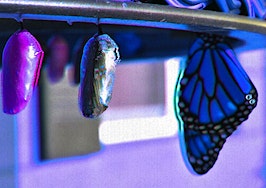“Green living” is arguably one of the most overused and misunderstood real estate buzzwords in recent markets. The misalignment between expectation and reality in eco-conscious building has led to confused buyers and unrealistic expectations across the board.
There are many myths that are in desperate need of debunking. However, the three I will discuss are perhaps the most macro in nature and, therefore, the most necessary to address as we lean on green-building principles in a post-COVID-19 real estate market.
If utilized correctly, incorporating green building trends can increase buyer demand and property returns especially in the luxury sector. Allow me to explain.
Myth 1: You have to sacrifice luxury for green construction
Nothing could be further from the truth. Many eco-conscious construction attributes are more expensive and, by nature, more high end. As the green movement progresses, fixtures and materials, and the companies that manufacture them, are carrying product lines with the eco-conscious stamp of approval. This includes Kohler and Porcelanosa.
As buyer power continues to grow, we’ve been seeing many discerning buyers opt for, or even demand, green attributes that go far beyond solar panels and LED lighting. The higher-end buyer pool is doing its homework and knows the value of various eco-certifications and the systems required to obtain them.
You’re not sacrificing luxury to own a green home. In fact, quite the contrary. You’re adding dollar signs to your closing disclosure in most cases, and one could argue, maintaining that value when you go to resell as the green demand continues.
Myth 2: Green building is just making a social statement
Perhaps in the beginning, like many ideas that run counter or different to the current way of thinking, the “green” movement was started by a small subset of the population. In this case, those who were composting in their backyard in between making kombucha and burning sage.
Now, green building has gone mainstream and is a massive trend in high-end real estate. The luxury buyer is savvy, and green buildings can save owners up to “$20,000 annually in combined energy bills,” according to the Robb Report. That’s savings few can ignore.
Furthermore, millennials make up the largest sector of the buying public right now and highly value sustainability in their purchasing decisions, including homes.
The hippies and the suits have united, and green building and living is no longer perceived as simply making a statement but rather as an important, widespread societal value that also makes sense from a cost savings perspective.
Myth 3: Green building just means ‘energy efficient’
While still known for efficiency, the health benefits from an eco-consciously built property are most notable right now.
As we all begin to heal from the COVID-19 pandemic and join this new world we have found ourselves in, health — both mental and physical — is what’s most important for our families. Green properties may include a multitude of attributes that assist in these areas.
The developer for one of my current listings in Hoboken, for example, insisted on an HVAC system that consists of a multizone, variable speed heat pump. The single-family brownstone is equipped with an energy recovery ventilator (ERV), which exhausts stale air and replaces it with fresh, filtered outside air all day long.
The two air streams pass through the ERV’s enthalpy wheel, which transfers heat and moisture from one stream to the other, to ensure energy stays in the home and is not wasted, as it is in a traditional exhaust system.
In a typical multifamily building, the exhaust “risers” are shared by multiple apartments, which creates the possibility for short-circuiting of the air from one apartment into the other. However, in many of this green developer’s projects, the ductwork is a 100 percent dedicated to each apartment, so there is no risk of cross-contamination of air between apartments where some tenants may be healthy and others ill.
In another building we plan to launch this fall in Union City, we’re exploring the use of Krion countertops sporting the new KRION eco-active, self-cleaning technology. This material not only hinders the growth of bacteria, but eliminates them whenever they come in contact with the surface.
HVAC systems and self-cleaning technology are just two examples of the ways in which making green-building choices will come into play for consumers in a post-COVID-19 world.
The progress green building has made cannot be ignored, and as more people focus on their health and homes post-pandemic, the interest will only increase exponentially.
“Luxury” and “green” will become one and the same across multiple facets of construction, and the millennial buyer pool will demand — not just request — green aspects to their newly constructed homes. As we move to a healthier and more conscious way of life, our homes will too.
While typically slightly more expensive to purchase, the long-standing effects of owning a green property will far outweigh the initial buy-in. After all, our health is our most valuable commodity, and therefore, the trend in synergy between health, happiness and home is no surprise. In fact, it’s not just a trend. Green is the new black.
Lisa Troyano-Ascolese is the owner, license partner and broker of record at Engel & Völkers Hoboken in Hoboken, Jersey City, New Jersey’s Gold Coast and Bergen County. Connect with her on Instagram or Facebook.







